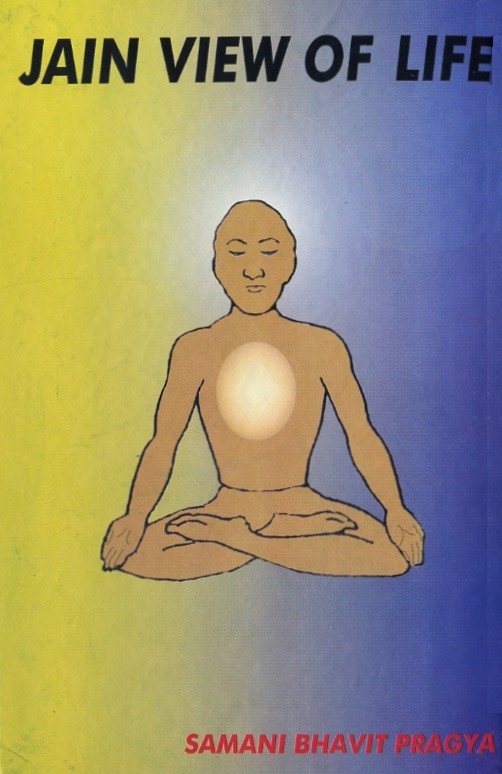Ascetic Life
The aim of human life is to achieve liberation. This can be accomplished through right faith, right knowledge, and right conduct. Jain scriptures deal elaborately with the path of salvation. A vow is self-imposed obligation as to what one ought to do and what not to carry out. Lord Mahavira propounded two types of religion, Anagara Dharma known as Mahavrata belonging to ascetic life, and Agara Dharma known as "Anuvrata" pertaining to householder life. The Great vows (Mahavrata) and small vows (Anuvrata) should be practiced in thought, word, and deed with full commitment to its careful observance at all times. Asceticism is the central path to salvation.
A Period of Probation
Those souls who want to renounce worldly life or worldly attachment must first of all undergo a period of probation and extensive training for from five to seven years. In this respect, the radical step was taken by Shravakas in Terapantha tradition that they establish an institution named Parmarthik Shikshan Sanstha which aims at creating full-fledged ascetic life before initiation into monkhood or nunhood. They all learn spiritual practice, life-style, and religious study including the Jain basic texts, grammar, and literature in this institution. They pass the curriculum or courses specified for graduates and undergraduates. The daily routine is to wake up 4:00 AM and go to bed at 10 PM.
Initiation
When the supervisor and he or she feels confident that they would be able to live the life of monkhood or nunhood, they get permission from their parents. When Acharya himself is convinced that they are capable of following the vows of Sadhus and Sadhvis, Acharya gives Deeksha (initiation). Deeksha is the ceremony in which the householder becomes a monk or a nun. At the time of Deeksha, they take five major vows and act strictly in accordance with those vows. Along with the great vows, they practice five samitis (comportment) and three guptis (restraints).
Five Major Vows
- Ahimsa Mahavrata (non-violence): Monks and nuns never cause harm or violence to any living being including the tiniest creature.
- Satya Mahavrata (truth): They never lie.
- Achaurya Mahavrata (non-stealing): They never take anything from anywhere, even a small needle, without the permission of the owner.
- Brahmacharya Mahavrata (celibacy): They observe an absolute adherence to celibacy. They also do not touch the opposite sex.
- Aparigraha Mahavrata (non-possession): They possess only the barest necessities. Apart from this, they have no attachment to material things, relationships, pleasure of the five senses, etc., and for that which they keep for their daily needs.
All of these major vows are practiced in word, thought, and deed. They do not get it done by others, do not assist anyone in committing sins, nor do they approve of anyone that commits such sins.
Non-violence is the basis of all other vows just as a fence is meant to protect a field. The other four vows are intended to enable a person to observe the prime vow of non-violence.
Five Samitis
- Irya Samiti: Taking due care in walking and moving about.
- Bhasha Samiti: Taking due care in speaking.
- Eshana Samiti: Taking due care in accepting alms.
- Adananikshepa Samiti: Taking due care in lifting, using, laying, and putting down things.
- Utsarga Samiti: Taking due care in disposing of excreta such as mucus, urine, stools, and other items.
Three Guptis
- Mano Gupti: Restraint of mind.
- Vaka Gupti: Restraint of speech.
- Kay a Gupti: Restraint of body.
All thirteen of the foregoing rules constitute the practical code of right conduct for an ascetic life.
Six Essential Duties
All monks and nuns perform six essential duties known as Avashvak twice a day before sunrise and after sunset.
- Samayika: Equanimity of mind, i.e., concentrating the mind upon one's own soul and its attributes by withdrawing wandering thoughts.
- Chaturvinshatistava: Adoration, recitation, and contemplation of the attributes of the divine twenty four Tirthankaras.
- Vandana: Obeisance to Acharya (guru).
- Pratikraman: Repentance of transgression of past activities committed in the performance of monkhood life.
- Kayotsarga: Practice of complete abandonment of the body while devoid of attachment.
- Pratyakhyana: Determination of renouncing sweets, fried foods, and other things.
Living Style
Digambar ascetics live naked. They wear no clothes. They own nothing except a peacock feather and one bowl for containing water. They have no bowl to hold food. At mid day, they go for alms and stand where householders are. They receive and eat food from the cavity of their hands. They also drink liquids poured therein while in the standing position. They eat and drink once a day, and they sit and sleep on the floor.
Shvetambar monks and nuns wear white clothes. They tie a rectangular piece of cloth over the mouth to avoid violence. They always have ogho (rajoharan), which means a mop of woolen threads to avoid violence where they walk, sit, or lie down, etc. They keep only limited clothes and bowls made of wood, coconut shells, or shells of pumpkin. These are the articles by which they can be distinguished. The.style of taking alms (gochari), vihar (walking) and locha are unique activities of Jain monks and nuns.
Gochari
The Jain monks and nuns do not cook, nor do they get it prepared for them. They go from house to house and receive a little food and water. As a cow eats grass moving from place to place, similarly the monks and nuns take little portion of food from the homes of householders. Thus they collect alms from various houses. They do not accept food from those male or female householders who offer food just after washing hands by running water, or putting down a crying baby. If he or she crushes or touches a living being plants, seeds, etc., with the physical body, then, in that state, they also do not accept alms. They don't throw-out even a particle of food. They take their meals at the place where they are staying. In rain and after sunset, they do not go out for alms. When they return from alms, they show alms to the Guruji or senior. If sometimes it is insufficient, they remain satisfied with their share. From time to time they do fasting. The entire life of Sadhus and Sadhvis is directed towards the upliftment of his or her own soul and others' welfare.
Vihar
They always move about on bare feet throughout their life whether it may be scorching sun or cold weather, stony, or thorny passage. They do not put on shoes while travelling. They do not stay more than a few days in one place except in the rainy season called Chaturmas, which is four months long. They do not move out of their place after sunset. Mostly they stay in Sabha Bhavana, Upashray, etc.
Loch
Loch is a particular activity of Jain Sadhus and Sadhvis. They pluck out their hairs by their hands or they get them plucked out by others. As a rule, they perform this twice a year at a particular time. It is regarded an essential rite of their life.
Self Supported
Monks and nuns are self-supporting. The whole work is done by themselves. They do not take help from anybody except their colleague monks. A nun is not allowed to be alone to go take alms. If a nun is sick, she can be carried in carts drawn by nuns, and the monks can be carried by monks. Nuns are more than twice the number as compared to monks. All monks and nuns show the path of wholesome, righteous, disciplined life to everyone through the media of discourses, discussion, or spiritual practices.
Revolutionary Order
Apart from Jain ascetic life, a new order was established by the Late Ganadhipati Tulsi and Acharya Mahapragya. The need for a third category between monks and nuns and householders for Jains living abroad and current time had been felt for the past thirty to forty years. As a result, to satisfy the demands of the modern age, the new order came into being in 1980. It was a revolutionary step in the modern epoch.
The saman and samani follow the lifestyle of Jain Sadhus and Sadhvis in respect to the five great vows and code of conduct with minor exceptions. They are granted permission to use, transportation and allowed to take food which is prepared for them. The aim of establishing this order is to facilitate the spread of Jainism and open up new avenues of constructive work world wide.
Before initiation, all undergo a period of probation and extensive training for about five to seven years. Afterwards, they become saman or samani. Today there are over ninety saman and samanis. They travel all around the world. Over the last twelve years, several groups have visited Japan, Hong Kong, U.S., Europe, Africa, Australia, etc. They have attended several worldwide conferences and conducted many camps. They have also lectured while abroad at schools, colleges, universities, and other communities.
 Samani Bhavit Pragya
Samani Bhavit Pragya
